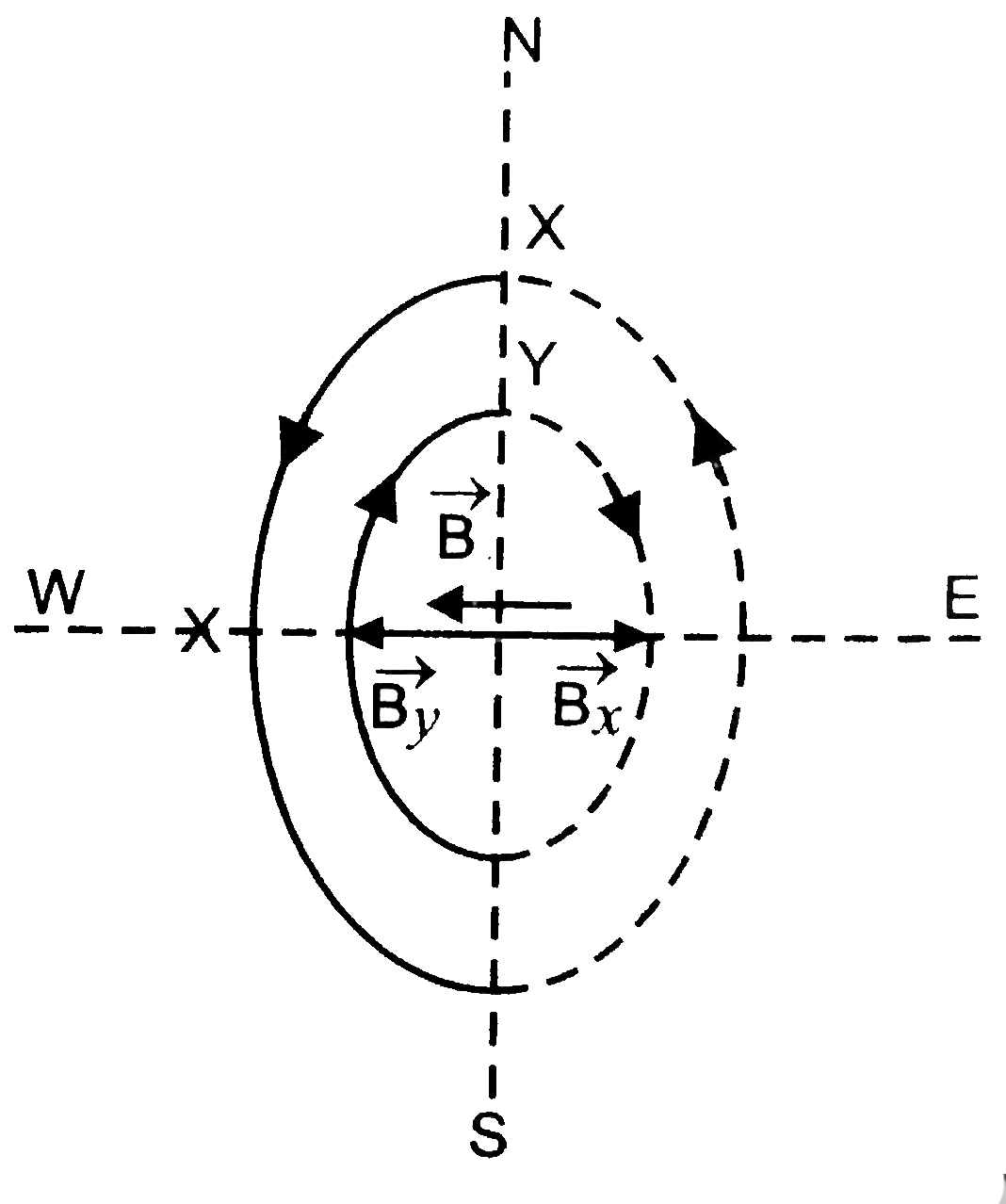By using the following atomic masses : . .
(i) Calculate the energy released during the decay of .
(ii) Show that cannot spontaneously emit a proton.Solution in Tamil
(a) The alpha decay of is given by Eq.The energy released in this process is given by
Substituting the atomic masses as given in the data. We find
.
(b) If spontaneously emitts a proton, the decay process would be
The Q for this process to happen is
.
Thus, the Q of the process is negative and therefore it cannot proceed spontaneously. We will have to supply an energy of to a nucleus to make it emit a proton.
Topper's Solved these Questions
- NUCLEIBook:NCERT TAMILChapter:NUCLEIExercise:EXERCISE
Explore 22 Videos
- NUCLEIBook:NCERT TAMILChapter:NUCLEIExercise:ADDITIONAL EXERCISES
Explore 9 Videos
- MOVING CHARGES AND MAGNETISM Book:NCERT TAMILChapter:MOVING CHARGES AND MAGNETISM Exercise:ADDITIONAL EXERCISES
Explore 17 Videos
- OPTICSBook:NCERT TAMILChapter:OPTICSExercise:EVALUATION (Numerical Problems)
Explore 10 Videos
Similar Questions
(a) Two stable isotope of .3Li6 and .3Li7 have respective abundances of 7.5% and 92.5%. These isotopes have masses 6.01512 and 7.01600 u respectively. Find the atomic weight of lithium.
(b) Boron has two stable isotopes .5B10 and .5B11. Their respective masses are 10.01294 u and 11.00931 u, and the atomic weight of boron is 10.81 u. Find the abundances of .5B10 and .5B11.
View SolutionIn a periodic table, the average atomic mass of magnesium is given as 24.312u. The average value is based on their relative natural abundance on earth. The three isotopes and their masses are .12Mg24(23.98504u), .12Mg25(24.98584) and .12Mg26(25.98259u). The natural abundance of .12Mg24 is 78.99% by mass. Calculate the abundances of the other two isotopes.
View SolutionTwo concentric coil X and Y of radii 16cm and 10cm respectively lie in the same vertical plane containing the north-south direction. Coil X has 20 turns and carries a current of 16A, coil Y has 25 turns and carries a current of 18A. The sense of current in X is anti-clockwise and in Y, clockwise, for an observer looking at the coil facing west, Figure. Give the magnitude and direction of the net magnetic field due to the coils at their centre.

View SolutionAn object is placed at a certain distance from a convex lens of focal length 20 cm. Find the distance of the object if the image obtained is magnified 4 times.
View SolutionThe atomic mass of uranium .23892U is 23.058u, that of throium.23490Th is 234.0436u and that of an alpha particle .42He is 4.006u, Determine the energy released when α−decay converts.23892U into .23892U. int .23490Th.
View SolutionBy using the following atomic masses : .23892U=238.05079u. .42He=4.00260u,.23490Th=234.04363u.
.11H=1.007834,.23791Pa=237.065121u (i) Calculate the energy released during the α−decay of .23892U.
(ii) Show that .23892U cannot spontaneously emit a proton.
View SolutionShow that ""_(92)^(238)U can not spontaneously emit a proton. Given: ""_(92)^(238)U = 238.05079u, ""_(91)^(237)Pa = 237.05121u ""_(1)^(1)H = 1.00783u
View Solutionहमें निम्नलिखित परमाणु द्रव्यमान दिए गए है
.23892U=238.05079u,.42He=4.00260u
.23490Th=234.04363,11H=1.00783u
.23791Pa=237.05121u
यहां प्रतीक Pa तत्व प्रोटऐक्टिनियम (Z=91) तत्व के लिए है।
(a) .23892U के α क्षय में उत्सर्जित ऊर्जा परिकलित कीजिए।
(b) दर्शाइए कि .23892U स्वतः प्रोटॉन उत्सर्जन नहीं कर सकता।
View SolutionWe are given the following atomic masses : ._(92)^(238)U = 238.05079 u " " ._(2)^(4)He=4.00260 u ._(90)^(234)Th=234.04363u " " ._(1)^(1)H=1.00783 u ._(91)^(237)Pa=237.05121 u Here the symbol Pa is for the element protactinium (Z = 91) . Calculate the energy released during the alpha decay of ._(92)^(238)U .
View SolutionWe are given the following atomic masses : ._(92)^(238)U = 238.05079 u " " ._(2)^(4)He=4.00260 u ._(90)^(234)Th=234.04363u " " ._(1)^(1)H=1.00783 u ._(91)^(237)Pa=237.05121 u Here the symbol Pa is for the element protactinium (Z = 91) . Show that ._(92)^(238)U cannot spontaneously emit a proton.
View Solutionहमे निम्नलिखित परमाणु द्रव्यमान दिए गए है-
23892U=238.05079u,42He=4.00260u,
23490Th=234.04363u,11H=1.00783u,
23791Pa=237.05121u
जहाँ Pa तत्व प्रोटऐक्टिवियम (Z =91) के लिए संकेत है।
23892U के α-क्षय में उत्सर्जित ऊर्जा परिकलित कीजिए।
View Solutionहमे निम्नलिखित परमाणु द्रव्यमान दिए गए है-
23892U=238.05079u,42He=4.00260u,
23490Th=234.04363u,11H=1.00783u,
23791Pa=237.05121u
जहाँ Pa तत्व प्रोटऐक्टिवियम (Z =91) के लिए संकेत है। दर्शाइए कि (92)238U स्वतः प्रोटॉन उत्सर्जित नहीं कर सकता ।
View SolutionThe partlcles emitted 1n the decay of ""_(92)^(238)U to ""_(92)^(234)U
View SolutionIs it possible for ""_(92)U^(238) spontaneously to emit a proton? Given, atomic mass of ""_(92)U^(238), ""_(91)Pa^(237) and ""_(1)H^(1) is 238.05079 u, 237.05115 u and 1.00783 u respectively.
View SolutionWe are given the following atomic masses:
23892U=238.05079u 42He=4.00260u
23490Th=234.04363u 11H=1.00783u
23791Pa=237.05121u
Here the symbol Pa is for the element protactinium (Z = 91).
(a) Calculate the energy released during the alpha decay of 23892U.
(b) Show that 23892U can not spontaneously emit a proton.
View SolutionWe are given the following atomic masses:
23892U=238.05079u 42He=4.00260u
23490Th=234.04363u 11H=1.00783u
23791Pa=237.05121u
Here the symbol Pa is for the element protactinium (Z = 91).
(a) Calculate the energy released during the alpha decay of 23892U.
(b) Show that 23892U can not spontaneously emit a proton.
View Solution